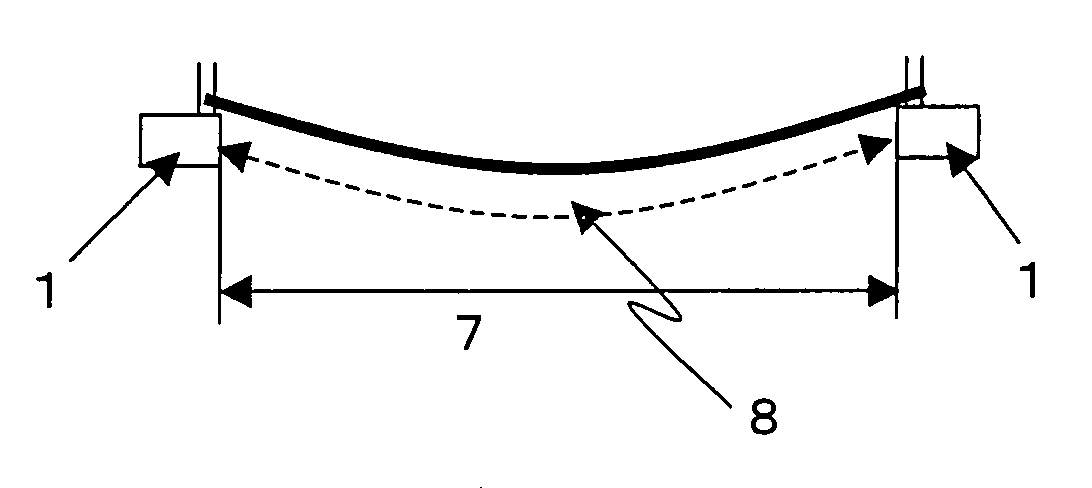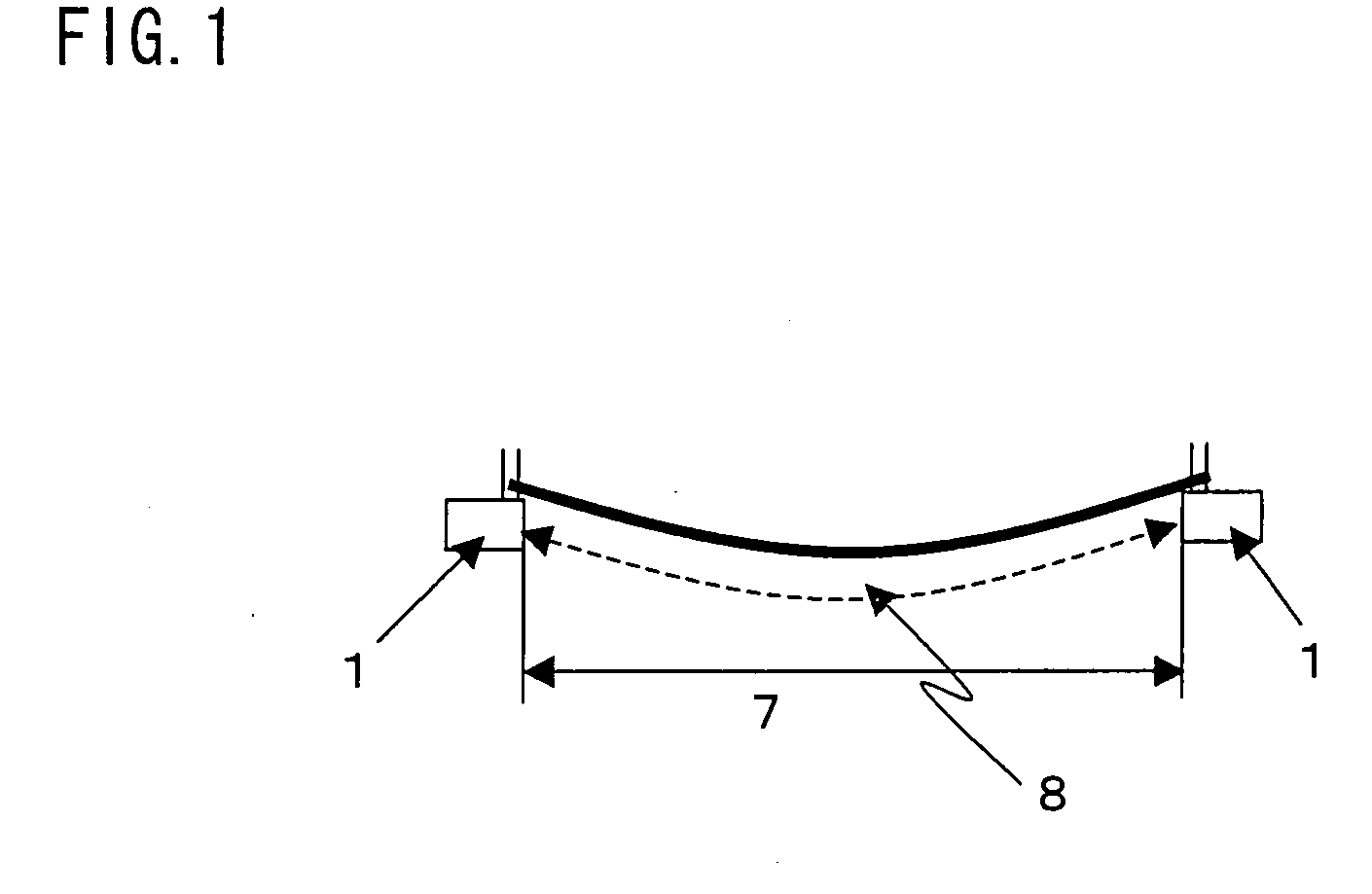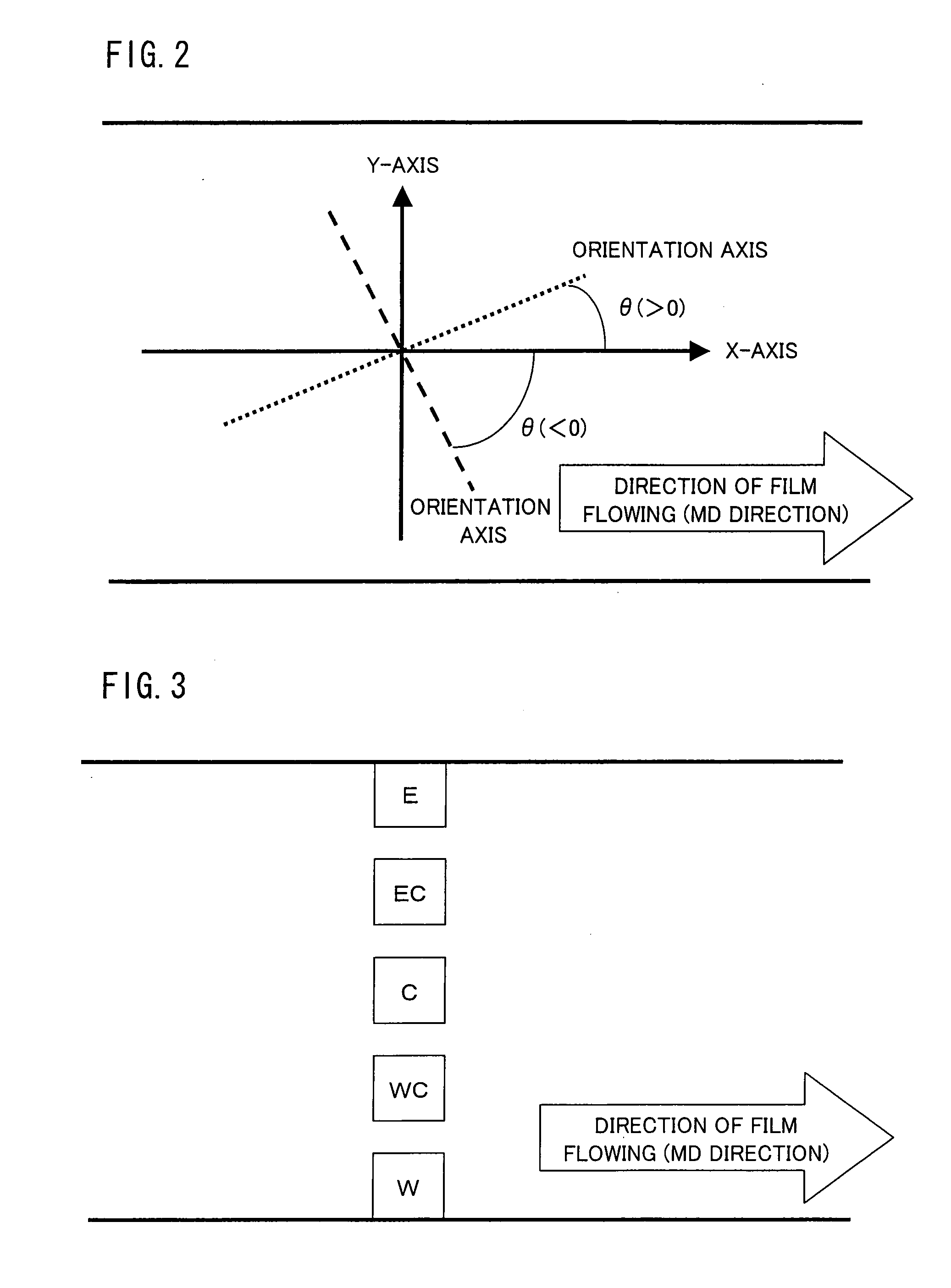Novel polyimide film and adhesive film and flexible metal-clad laminate both contained with the same
a technology of polyimide film and adhesive film, which is applied in the direction of film/foil adhesives, metal layered products, synthetic resin layered products, etc., can solve the problems of affecting the effect of dimensional change, and increasing the stringent requirements of three-layer fpcs using thermosetting adhesives, etc., to achieve the effect of suppressing dimensional change, reducing heat stress, and reducing the number of layers
- Summary
- Abstract
- Description
- Claims
- Application Information
AI Technical Summary
Benefits of technology
Problems solved by technology
Method used
Image
Examples
synthetic example 1
Synthesis of Thermoplastic Polyimide Precursor
[0187]To a 2,000 mL glass flask, 780 g of N,N-dimethylformamide (hereinafter, also referred to as DMF) and 115.6 g of 2,2-bis[4-(4-aminophenoxy)phenyl]propane (hereinafter, also referred to as BAPP) were added. While the resulting mixture was being stirred in a nitrogen atmosphere, 78.7 g of 3,3′4,4′-biphenyltetracarboxylic dianhydride (hereinafter, also referred to as BPDA) was gradually added to the mixture. Subsequently, 3.8 g of 3,3′,4,4′-ethylene glycol dibenzoate tetracarboxylic dianhydride (hereinafter, also referred to as TMEG) was added, and the resulting mixture was stirred in an ice bath for 30 minutes. A solution of 2.0 g of TMEG in 20 g of DMF was separately prepared and gradually added to the reaction solution while monitoring the viscosity under stirring. The addition and the stirring were ceased when the viscosity reached 3,000 poise. A polyamic acid solution thereby obtained was flow-cast on a 25 μm PET film (Cerapeel HP...
examples 1 through 6
Synthesis of Polyimide Film
[0188]In a reaction system kept at 5° C., 3,4′-diaminodiphenyl ether (hereinafter also referred to 3,4′-ODA) and BAPP in a molar ratio shown in Table 1 were added to DMF, and stirred. After dissolution of 3,4′-ODA and BAPP was visually checked, benzophenonetetracarboxylic dianhydride (hereinafter, also referred to as BTDA) was added in a molar ratio shown in Table 1 and stirred for thirty minutes. Then, pyromellitic dianhydride (hereinafter, also referred to as PMDA) was added in a molar ratio shown in Table 1 and stirred for thirty minutes. Subsequently, p-phenylenediamine (hereinafter, also referred to as p-PDA) was added in a molar ratio shown in Table 1 and stirred for fifty minutes. Subsequently, PMDA was again added in a molar ration shown in Table 1 and stirred for thirty minutes.
[0189]At the end, 3 mol % of PMDA was dissolved into DMF to prepare a solution with solid content of 7%. The solution prepared was gradually added to the above-mentioned re...
example 7
Synthesis of Polyimide Film
[0191]To the polyamic acid solution obtained in the procedure as in Example 1, an imidization accelerator composed of acetic anhydride / isoquinoline / DMF (ratio of 2.0 / 0.3 / 4.0 based on weight) was added so as to be a ratio of 45% based on weight to the polyamic acid solution and continuously stirred by a mixer. The resulting mixture was supplied from a T die and flow-cast on an endless belt made of stainless steel that runs 20 mm below the die. This resin film was heated at 110° C. for 100 seconds. The resulting self-supporting gel film (residual volatile content: 50 wt %) was peeled off from the endless belt. This resulting gel film was held on a tenter clip and then transferred into a heating furnace. The gel film was dried in a hot-air drying furnace at 300° C. for 30 seconds, in a hot-air drying furnace at 400° C. for 30 seconds, and in an IR furnace at 500° C. for 30 seconds for continuous drying and imidization. As a result, a polyimide film having a t...
PUM
| Property | Measurement | Unit |
|---|---|---|
| Temperature | aaaaa | aaaaa |
| Temperature | aaaaa | aaaaa |
| Temperature | aaaaa | aaaaa |
Abstract
Description
Claims
Application Information
 Login to View More
Login to View More - R&D
- Intellectual Property
- Life Sciences
- Materials
- Tech Scout
- Unparalleled Data Quality
- Higher Quality Content
- 60% Fewer Hallucinations
Browse by: Latest US Patents, China's latest patents, Technical Efficacy Thesaurus, Application Domain, Technology Topic, Popular Technical Reports.
© 2025 PatSnap. All rights reserved.Legal|Privacy policy|Modern Slavery Act Transparency Statement|Sitemap|About US| Contact US: help@patsnap.com



